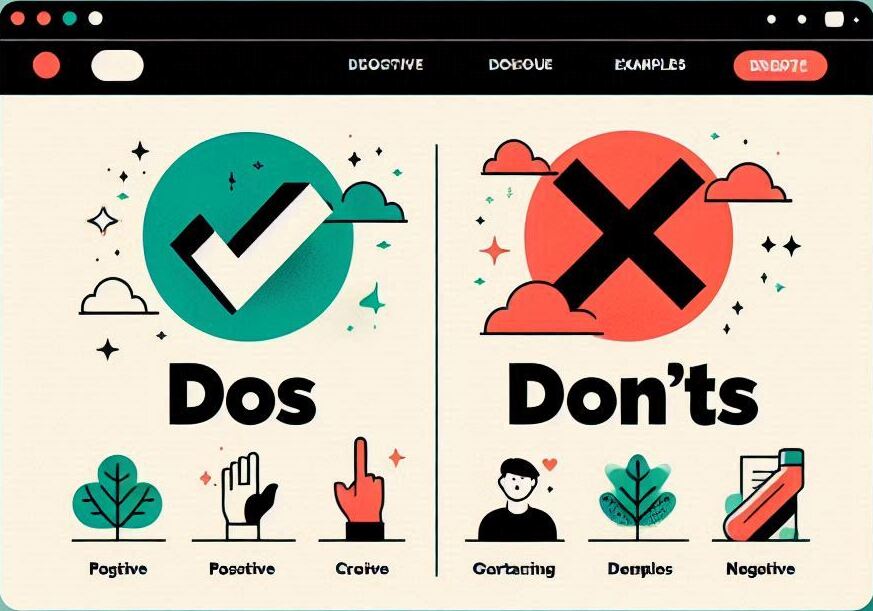About Us Pages that Connect: Crafting a Story that Resonates
Your startup’s “About Us” page is more than just a summary of who you are—it’s a powerful tool for building credibility online. When done right, it can draw your audience in and help form a personal connection. Crafting a story that resonates with visitors can make your business feel trustworthy and relatable.

Know Your Audience First
Before you begin writing your “About Us” page, think about who you are talking to. You’re not just explaining your company to the world—you’re speaking directly to potential customers. Use your brand’s unique voice to address their needs, challenges, and goals. What pain points are they experiencing, and how can your business help solve them?
When your audience feels understood, it builds trust, and trust is the foundation of building credibility online. Keep the language clear and conversational, like you’re having a friendly chat with a customer over coffee.
Share Your Journey
Every startup has a story. Whether it’s a humble beginning or a unique moment of inspiration, sharing your journey can help your audience relate to you. Did your business start from your living room, or did it grow out of a personal frustration with an industry problem? Explain the “why” behind your business, and be transparent about your mission.
When people understand the heart behind your startup, it humanizes your brand. Authenticity is key in creating an “About Us” page that resonates with readers and enhances your online credibility.
Highlight Team and Values
Your audience wants to know the people behind the business. Highlight your team, their skills, and their passion for what they do. Adding photos and short bios for your team members can make your business more personable and relatable.
Along with the team, share your core values. What does your business stand for? Are you committed to sustainability, innovation, or customer satisfaction? Values help potential clients align with your brand, further building credibility online.
Keep It Personal, But Professional
Your “About Us” page should reflect your brand’s personality, but remember to strike a balance between being personal and professional. Avoid overloading visitors with jargon or technical language. Instead, aim for an engaging, easy-to-read narrative that inspires confidence in your company.
Incorporating the right mix of warmth and professionalism will leave a lasting impression, ensuring that visitors trust you as not just a business, but as people who understand their needs.
By crafting a compelling “About Us” page, you’ll not only build credibility online, but also create a lasting connection with your audience.
Interactive Contact Forms: Making It Easy for Clients to Reach You
An interactive contact form is one of the most critical elements of your website, especially when you’re focused on building credibility online. This is the gateway for potential clients to connect with you. A well-designed, user-friendly form makes the process easy and approachable, which can significantly improve user experience and trust.
Keep the Form Simple and Focused
When it comes to contact forms, simplicity is key. You don’t want to overwhelm users with too many fields or complex questions. Ask for the essential details—name, email, and a brief message. If your business needs additional information, like a phone number or service preference, make those fields optional. The easier you make it for visitors to fill out the form, the more likely they’ll complete it.
A streamlined, clutter-free form shows you respect your clients’ time, further building credibility online by demonstrating professionalism. Keep the layout intuitive, with clear labels and instructions to avoid confusion.
Use Smart Interactivity
To make your contact form more engaging, add smart interactivity features like auto-fill suggestions, drop-down options, or checkboxes. These features not only make the form easier to use but also make it feel more personalized. If possible, include an automatic confirmation message when the form is submitted. It reassures clients that their message has been received, which enhances trust.
Smart interactivity makes the process smoother and demonstrates your attention to detail, a small but significant way of building credibility online.
Provide Multiple Contact Options
An interactive form should not limit communication to just one method. Some clients may prefer to send a quick email, while others may want to speak with someone directly. Consider including additional contact options like phone numbers, email addresses, or links to social media profiles. Letting clients choose their preferred way to get in touch makes your website more user-friendly.
Offering multiple channels for communication also shows you’re accessible, a vital part of building credibility online. It signals that you are available and responsive to client inquiries.
Design for Mobile and Accessibility
Many users will access your site from mobile devices, so your contact form must be fully responsive. Ensure that it functions smoothly across all screen sizes, with clickable buttons and readable text. Accessibility features like screen reader compatibility and keyboard navigation are also essential.
A mobile-friendly and accessible form enhances your website’s overall user experience, ensuring that all clients, regardless of device or ability, can easily reach out to you. By making your contact form universally usable, you’re not only improving client experience but also building credibility online by demonstrating inclusivity and attention to detail.
In short, an interactive contact form should be simple, engaging, and designed with the user in mind. It’s an essential part of creating a smooth, welcoming experience that helps potential clients take the next step in working with you. By making it easy for clients to reach out, you’re fostering trust and building credibility online at every stage of the interaction.
Social Proof and Testimonials: Showcasing Customer Reviews to Build Credibility
In the digital age, building credibility online can make or break your business. One of the most effective ways to earn trust is by showcasing social proof and testimonials. When potential clients see positive reviews from real people, it reassures them that they’re making the right choice. Let’s dive into how you can use testimonials to strengthen your online presence.
Why Social Proof Matters
You’ve likely made a purchase or signed up for a service based on a friend’s recommendation, right? That’s social proof in action. People naturally trust the experiences of others more than sales pitches. By featuring reviews, case studies, and testimonials on your website, you offer visitors a glimpse into the successful results you’ve already delivered. This builds trust, making building credibility online easier and faster.
Use authentic, detailed testimonials from satisfied clients to create a connection. Avoid vague statements like “great service.” Instead, showcase stories that explain what specific problems were solved or goals were achieved.
Make Testimonials Easy to Find
No one should have to hunt around for customer reviews on your website. Place testimonials prominently on your homepage, services page, or even create a dedicated testimonial section. The goal is to make it easy for visitors to see what others are saying about your business.
Another great idea is to pepper client quotes throughout your site. Whether you’re highlighting a product, service, or blog post, testimonials can support your claims and further build credibility online. Remember, the more accessible social proof is, the more likely it will influence potential clients.
Include Diverse Testimonials
You serve a wide range of clients, so your testimonials should reflect that. Include reviews from clients in different industries, project sizes, or service types. Diversity helps a wider audience relate to the experiences and visualize how your services can meet their unique needs.
Displaying various types of testimonials—written reviews, star ratings, and even video testimonials—adds authenticity and variety. Offering a range of experiences and feedback can go a long way in building credibility online for your business.
Make It Personal and Authentic
Nothing beats the power of authentic testimonials. While it may be tempting to use stock reviews or overly polished quotes, these can come across as insincere. Keep it real. Feature genuine feedback from your actual clients, and if possible, include their photos or logos for an added layer of authenticity.
People connect with stories, so encourage your clients to share personal experiences rather than just providing generic praise. Personal stories make reviews more relatable and compelling, increasing the impact they have on potential clients. This approach not only helps in building credibility online but also fosters deeper connections with your audience.
Incorporating customer reviews and testimonials into your website is a powerful way to establish trust and build credibility online. Whether it’s a short quote or a detailed case study, each testimonial acts as a vote of confidence that can turn curious visitors into loyal clients.
Multimedia Content: Adding Videos, Infographics, and Other Visual Elements to Enhance User Engagement
When it comes to building credibility online, visuals play a key role. Incorporating multimedia content like videos, infographics, and images can make your website more engaging and help establish a deeper connection with your audience. Visual content not only grabs attention but also simplifies complex information, making your message easier to digest.
Why Multimedia Matters for User Engagement
In today’s fast-paced digital world, people don’t always have the time or patience to read through long blocks of text. That’s where multimedia content steps in. Adding videos, infographics, or even interactive elements helps break up the monotony of text while offering value-packed insights in a fun and engaging format.
Imagine you’re explaining a complicated legal process or business strategy. Instead of paragraphs of text, a well-designed infographic or a short video can visually summarize the key points. This not only saves time for your audience but also improves their understanding—leading to higher engagement and trust. After all, building credibility online isn’t just about what you say; it’s about how you say it.
Videos: Your Chance to Make a Personal Connection
One of the most effective ways to engage your audience is through video content. Videos provide an opportunity to speak directly to your clients, offering a personal touch that text can’t quite capture. You can create explainer videos, share customer testimonials, or even show behind-the-scenes footage of your work process.
A well-produced video creates an emotional connection and keeps visitors on your website longer, improving user engagement and even SEO rankings. When your audience feels they know you, they’re more likely to trust you—an essential step in building credibility online.
Infographics: Simplify the Complex
Infographics are another excellent tool for engaging your audience, especially when you need to present data or explain complex ideas. They’re visually appealing, easy to understand, and perfect for sharing across social media platforms. Plus, a well-designed infographic can make even the most intricate topic feel approachable.
For example, if you’re sharing data about industry trends, infographics allow you to transform boring numbers into colorful charts and diagrams that are more digestible and fun to look at. This helps you maintain your audience’s attention while still delivering valuable information, further contributing to building credibility online.
Images and Other Visuals: Add Depth to Your Content
Don’t underestimate the power of high-quality images. Whether it’s a team photo or a snapshot of a completed project, authentic images help put a face to your brand. Stock images can feel impersonal, so try to use real photos whenever possible to build trust and connect with your audience.
Beyond images, you can also incorporate slideshows, podcasts, or even interactive quizzes to make your site more dynamic and interactive. The more engaging your content, the more likely visitors are to stay on your page longer and interact with your brand. This, of course, goes a long way toward building credibility online.
Incorporating multimedia content is a must if you want to boost engagement and build credibility. Whether through videos, infographics, or eye-catching visuals, these elements make your website more engaging and show potential clients that you’re invested in providing a great user experience.
some more useful tips are given here
Still have questions? Why don’t you click here for a free consultation with expert




